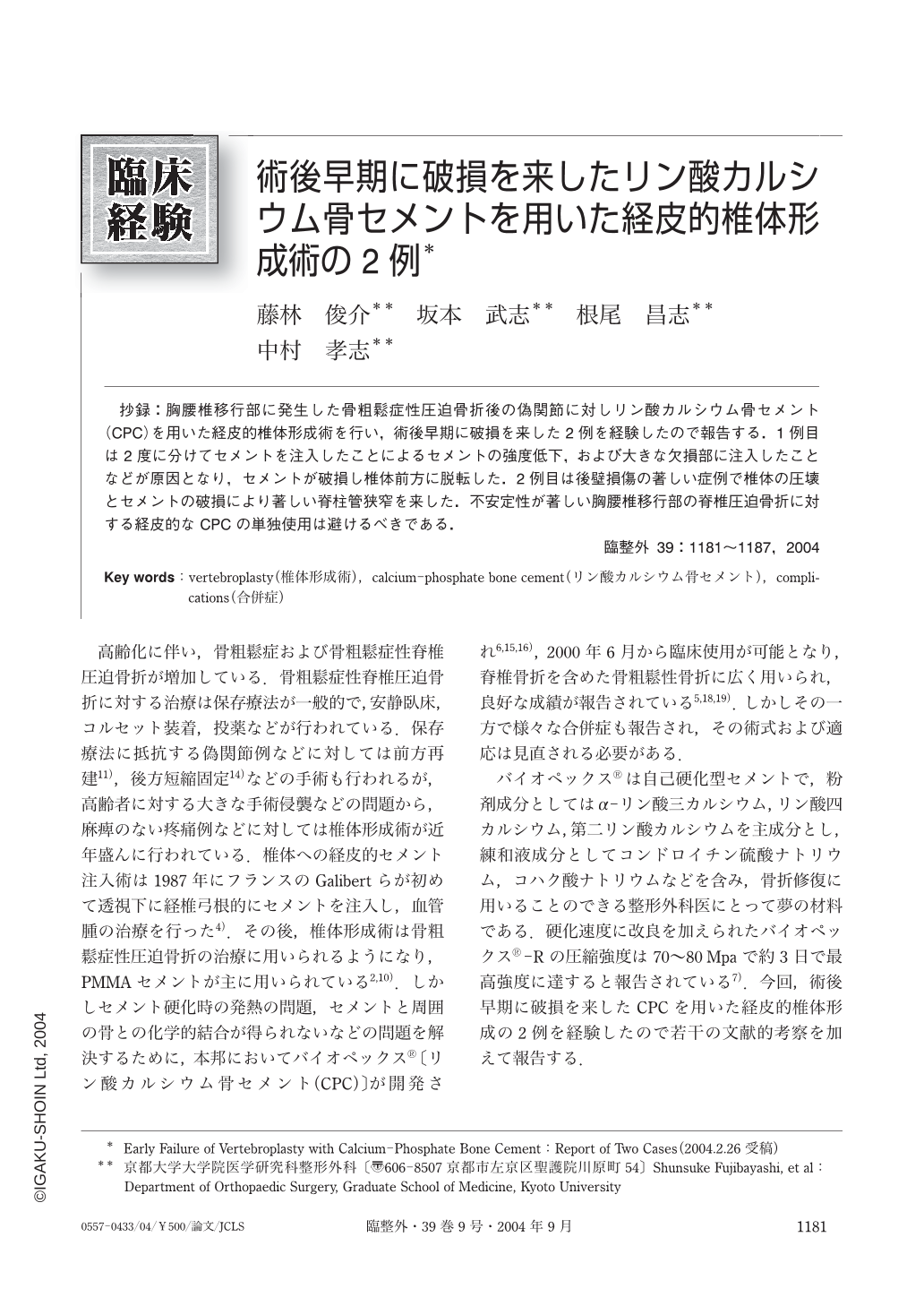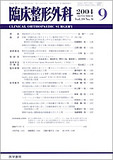Japanese
English
- 有料閲覧
- Abstract 文献概要
- 1ページ目 Look Inside
抄録:胸腰椎移行部に発生した骨粗鬆症性圧迫骨折後の偽関節に対しリン酸カルシウム骨セメント(CPC)を用いた経皮的椎体形成術を行い,術後早期に破損を来した2例を経験したので報告する.1例目は2度に分けてセメントを注入したことによるセメントの強度低下,および大きな欠損部に注入したことなどが原因となり,セメントが破損し椎体前方に脱転した.2例目は後壁損傷の著しい症例で椎体の圧壊とセメントの破損により著しい脊柱管狭窄を来した.不安定性が著しい胸腰椎移行部の脊椎圧迫骨折に対する経皮的なCPCの単独使用は避けるべきである.
Two cases of vertebral pseudoarthrosis secondary to an osteoporotic vertebral fracture at the thoracolumbar junction were treated by percutaneous vertebroplasty with calcium-phosphate bone cement. In both cases, cement failures occurred immediately after the operation. In the first case, the cement failed and dislodged anteriorly. The mechanical strength of the hardened cement may have been reduced, because the cement was introdused by means of more than one injection, and the cavity was too large for the cement to support the spine. In the second case, the reconstructed spinal column was too weak to bear load-bearing because of existing massive vertebral posterior wall injury. Severe spinal canal stenosis was caused by displaced bone and cement fragments. Simple percutaneous vertebroplasty with calcium-phosphate cement should not be used to treat unstable vertebral fractures at the thracolumbar junction.

Copyright © 2004, Igaku-Shoin Ltd. All rights reserved.


